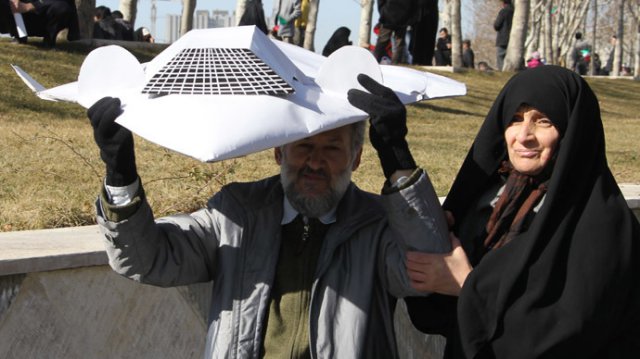 Iranian officials say they have completed decoding the surveillance data and software extracted from the Central Intelligence Agency (CIA) UAS that the United States lost possession of nearly two years ago near the city of Kashmar.
Iranian officials say they have completed decoding the surveillance data and software extracted from the Central Intelligence Agency (CIA) UAS that the United States lost possession of nearly two years ago near the city of Kashmar.
Hossein Salami, the lieutenant commander general of Iran’s Army of the Guardians of the Islamic Revolution, told the country’s Fars news agency that analysts have finally cracked the systems used within the RQ-170 Sentinel obtained in December 2011.
Iranians claimed previously that they brought it down after it entered Iranian airspace without permission. Roughly one week later, CIA officials admitted it was conducting a reconnaissance mission over Afghanistan when it went missing.
“All the memories and computer systems of this plane have been decoded and some good news will be announced in the near future not just about the RQ-170 and the optimizations that our forces have done on the reversed engineered model of this drone, but also in area of other important defense achievements,” Fars quoted Salami.
When the Iranian military gained control over the UAS, the unmanned aircraft’s erase sequence allegedly failed to delete sensitive data from it. Since then, Iranian experts have been decoding the captured data, occasionally reporting their progress.
Although the CIA has not admitted the extent of the UAS’ capabilities, experts have said previously that reverse engineering the Sentinel could be a significant event for any nation-state looking to learn more about the technologies utilized by American spy planes.
“It carries a variety of systems that wouldn’t be much of a benefit to Iran, but to its allies such as China and Russia, it’s a potential gold mine,” robotics author Peter Singer told the Los Angeles Times in 2011.
“It’s bad — they’ll have everything” an unnamed US official added to the Times then. “And the Chinese or the Russians will have it too.”
Photo: An Iranian couple hold a model of the captured US RQ-170 during the 33rd anniversary of the Islamic revolution in Azadi (Freedom) square in Tehran on February 11, 2012. (AFP Photo/Atta Kenare)
Source: RT

It is already confirmed that the RQ-170 Sentinel they claim to have captured is a makeup
I do not understand why is given credibility to such gossip.
Probably to increase the level of perceived threat to drive further investment along lines not dissimilar to the hysteria that reigned during the cold war. It benefits the Iranians as it will lead to an increase in their UAS budget and the Allies on similar grounds since the systems seem to have been “compromised”.